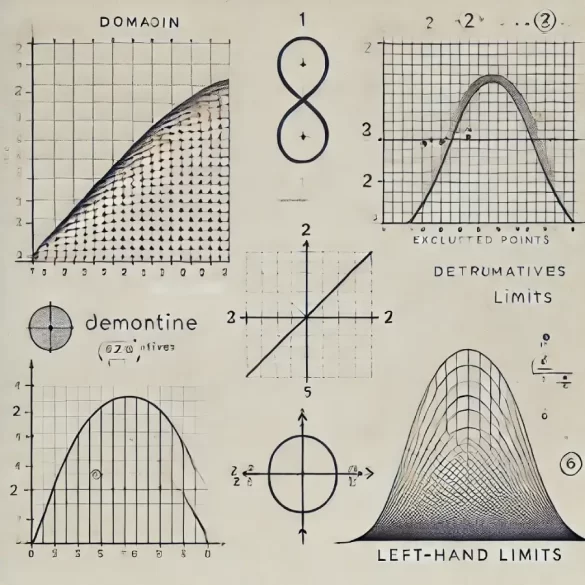Understanding the domain of functions, computing their derivatives, and evaluating limits are fundamental concepts in calculus. Below is a set of exercises designed to strengthen these skills.
Exercise Set
(a) Find the domain of the following functions:
(b) Compute the first derivative of the following functions:
(c) Evaluate the following limits:
Step-by-Step Blog Explanation
(a) Finding the Domain of Functions
The domain of a function is the set of all possible input values for which the function is defined. There are two common restrictions:
- Denominators cannot be zero, since division by zero is undefined.
- Even roots (e.g., square roots) must have non-negative radicands, ensuring real values.
Let’s analyze the first function:
- The denominator cannot be zero, so .
- The square root function must have a non-negative argument:
Factoring:
Solving using a sign analysis, we find , but since , the domain is:
(b) Computing First Derivatives
Differentiation helps us analyze the rate of change of functions.
For:
We use the quotient rule:
where:
- , so
- , so
Applying the rule:
Expanding and simplifying gives the final derivative.
(c) Evaluating Limits
For:
Factoring the numerator:
Cancel the common factor:
Substituting :
Thus, the limit is 3.
Conclusion
By mastering domain identification, derivative computation, and limit evaluation, students build a strong foundation for calculus. Keep practicing, and these concepts will become second nature!

